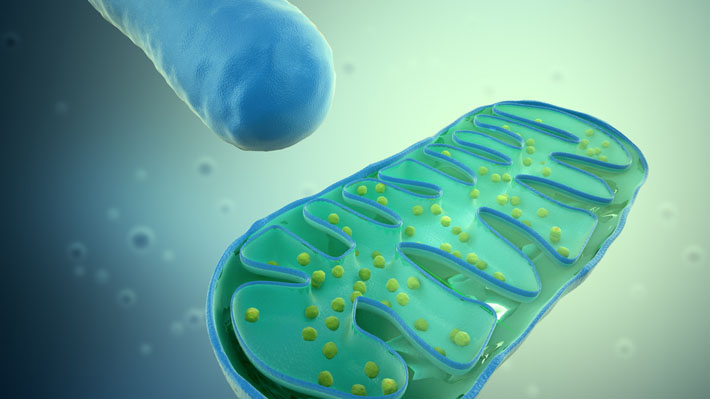
DCA and Cancer
DCA and Cancer
By: Dr. Adam McLeod , ND, BSc
Several years ago there was a huge buzz in the media about Dichloroacetic Acid (DCA) and its use in cancer1. The public was outraged that DCA could be an effective cancer therapy and that the government showed little interest because DCA could not be patented. The drug companies ignored any evidence related to this therapy because without a patent it was simply not a profitable venture. Fortunately, some private researchers raised enough money to continue studies into this simple yet effective therapy.
DCA was initially used for lactic acidosis, a condition where the blood has high levels of lactic acid. The DCA inhibits the enzyme pyruvate dehydrogenase kinase which causes a major shift in metabolism from fermentation to oxidation in the mitochondria2. In other words, it forces the mitochondria in cells to become more active. This is relevant to cancer because the survival of cancer cells depends on the mitochondria being dormant. The mitochondria are capable of triggering cell death in abnormal or damaged cells. Cancer cells are grossly abnormal and they often depend on the mitochondria being inactive.
The ultimate goal of this therapy is to activate the mitochondria and allow them to trigger cell death in the abnormal cancerous cells. The DCA will certainly help to activate these pathways but it is essential that patients also exercise. By regularly doing aerobic exercise you are also stimulating the mitochondria. The excessive energetic demands during exercise trigger the mitochondria to be more active and burn oxygen. DCA when combined with exercise significantly increases the consumption of oxygen by the mitochondria which is an indication that the mitochondria are being further activated5.
It is essential for cancer patients (not just patients on DCA) to do aerobic exercise if they are physically able to. It does not matter what that type of exercise it is, just as long as it is a moderate aerobic exercise that you are able to do on a regular basis. There is an overwhelming body of evidence which clearly shows that cancer patients who regularly exercise simply do much better than those who do not. It is possible that this mitochondrial activation could be one of the reasons for this.
Most of the research seems to indicate that DCA is more effective for cancers that are localized in the nervous system3. Although it can be used for other types of cancer, it is less indicated for cancers that do not localize to the nervous system. A very common side effect from chemotherapy is neuropathy4 and DCA should be used with caution if there are any signs of neuropathy. There are no known drug interactions with DCA except for the drug Lasix which is a diuretic. Overall DCA is a very safe therapy and there are many studies that demonstrate the safety of this therapy.
The bottom line is that DCA is an effective therapy when used appropriately. It is not a cure on its own but DCA can be a major part of an effective and comprehensive integrative cancer treatment plan. It can be administered either orally or intravenously. The oral dose is typically 15-20mg/kg and it is cycled 2 weeks on followed by 1 week off. It is extremely important to have the appropriate neurological support during this therapy. DCA is known to cause significant neuropathy and you must be monitored by a physician who is experienced with the use of DCA. Common neurological support includes NAC, Thiamine (B1) and ALA. It is essential that you consult with a Naturopathic physician who focuses in integrative cancer to know what neurological support is best suited for you.
A Naturopathic doctor that works with cancer care will take the time to look at your case and will write you a prescription for DCA if it is truly indicated. Contact Yaletown Naturopathic Clinic to see if this is the right therapy for you.
Dr. Adam McLeod is a Naturopathic Doctor (ND), BSc. (Hon) Molecular biology, First Nations Healer, Motivational Speaker and International Best Selling Author. He currently practices at his clinic in Vancouver, British Columbia where he focuses on integrative cancer treatments. https://www.yaletownnaturopathic.com
References
1) “Cheap, ‘safe’ drug kills most cancers”. New Scientist. 2007-01-17. Retrieved 2014-08-23.
2) Stacpoole PW (1989). “The pharmacology of dichloroacetate”. Metabolism 38 (11): 1124–1144. doi:10.1016/0026-0495(89)90051-6. PMID 2554095
3) Michelakis E D, et al. Metabolic Modulation of Glioblastoma with Dichloriacetate. Sci Transl Med 12 May 2010: Vol. 2, Issue 31
4) Abramowski MC. Chemotherapy-Induced Neuropathic Pain. J of the Advanced Practitioner in Oncology. 2010;1:279-283.
5) Ludvik, Bernhard, et al. “Effects of dichloroacetate on exercise performance in healthy volunteers.” Pflügers Archiv 423.3-4 (1993): 251-254.






Leave a Reply
You must be logged in to post a comment.